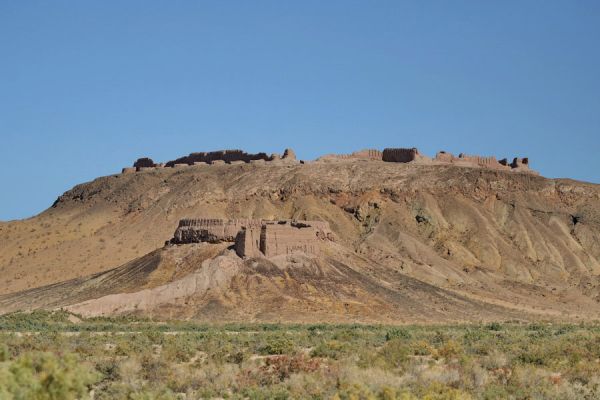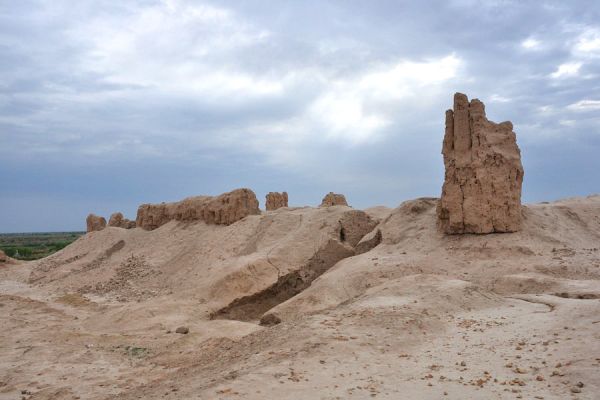Ayaz-kala settlement
Twenty kilometers northeast of Toprak-kala, the ancient capital of ancient Khorezm, the Ayaz-kala settlement is located between the moving sands of the Kyzylkum desert and the spurs of the sacred Sultanuizdag mountains. The choice of a place by unnamed builders for the construction of this fortification is involuntarily admired. Located on top of a flat hill built of marbled limestones, the fortress was almost impregnable. Steep hillsides protect the fortress from the south, west and north, and an elevated plateau adjoins it from the east, which is difficult for a person on foot to overcome even light, not to mention a warrior carrying weapons.
The double walls of Ayaz-kala, oriented to the cardinal points and made of mud bricks, cover an area of about 3 hectares. The thickness of the outer ten-meter wall, which has been preserved to this day, is about 2.5 meters, the inner one is slightly smaller. The walls were reinforced with semicircular towers 11-13 meters apart. There is a fairly spacious room inside each tower, obviously for the guards to rest or the warriors to rest during the battle.
A blind corridor is laid between the walls along the entire perimeter, blocked by a box vault. A shooting gallery with narrow oblique loopholes was built above the corridor. The only entrance to the fortress, protected by an ingenious gateway maze, is located from the south. Thus, the south wind, which prevails in these parts, blew dust and debris out of the settlement itself, because the name of the Ayaz-Kala fortress can be translated as "Fortress in the wind."
According to the configuration of the bricks and the nature of the masonry walls, archaeologists have determined the date of the formation of the Ayaz-Kala settlement in the IV century BC. The bronze three-bladed arrowhead found near the southern wall of the gateway labyrinth belongs to this era. Such arrows, as is well known to historians, were used in those days by the Sauromats and Saks, who roamed in the lower reaches of the Syr Darya and more than once threatened the tranquility of the cities of Ancient Khorezm.
There are several legends among the locals related to the Ayaz-Kala fortress. According to one of them, during the great troubles, when the old ruler died and there was no one to take his place, the priests predicted to the gathered crowd that the one on whose hand the royal hunting falcon would be released should be elected the new shah. But the bird landed not on the hand, but directly on the head of a simple warrior, and when it was driven away, it returned to the same place a second time. The people elected a warrior as their ruler, who himself began to lead the construction of a new castle on the hill, and, having reigned in it, he ruled for a long time and fairly. In order not to forget about his origins, yesterday's soldier, and now the king, ordered an old worn-out boot to be hung in a prominent place in front of the throne.
At the beginning of our era, the inhabitants of Ayaz-kala attempted to build new fortifications of the fortress. Bricks were prepared and the construction of new towers on the western and southern sides of the outer walls began. During the archaeological excavations, several large stacks of bricks were found, stacked vertically "on an edge". Why the construction was not completed, and the inhabitants and the military garrison left the fortress is a mystery for the next generations of researchers.




















